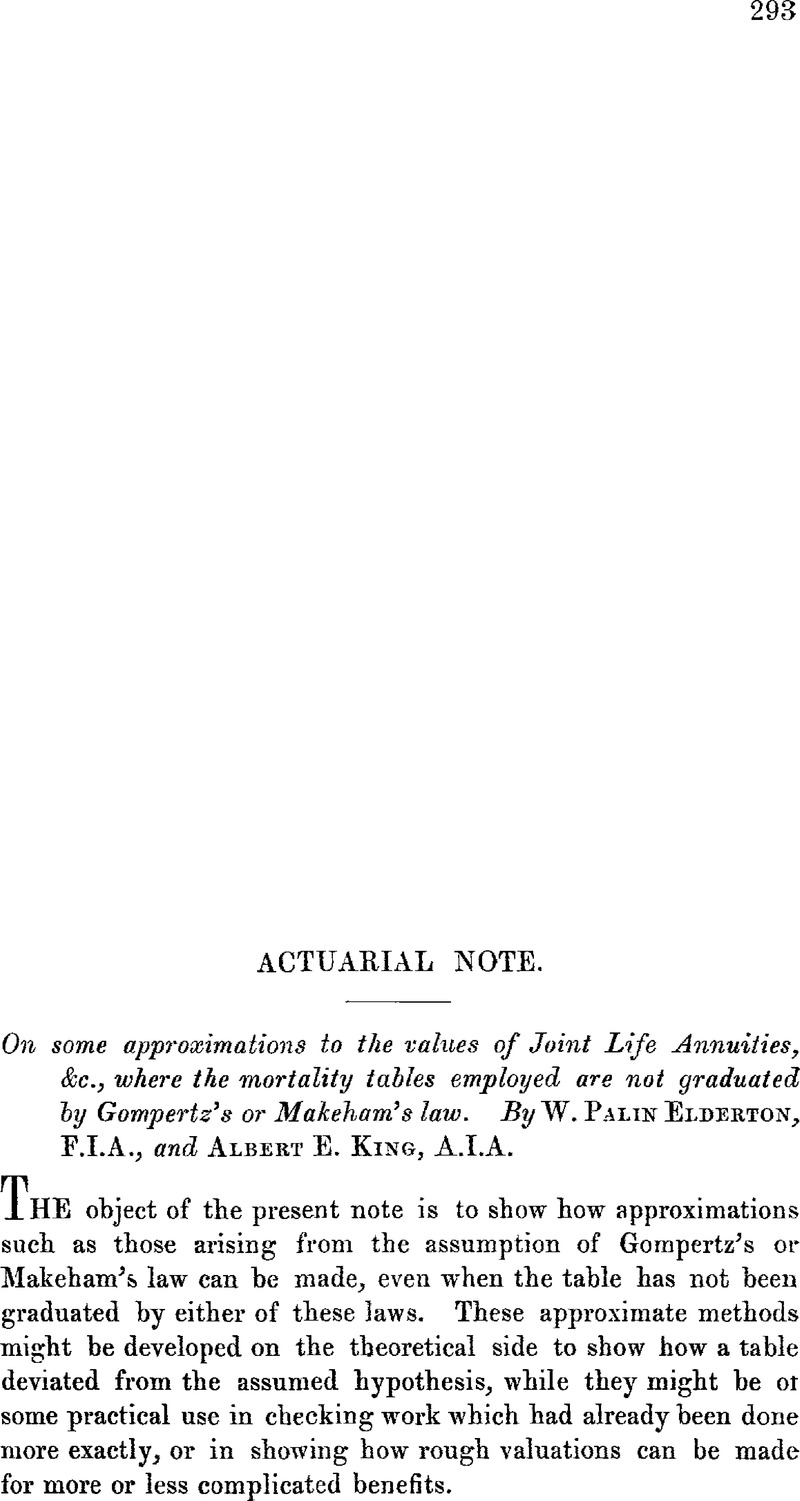No CrossRef data available.
Published online by Cambridge University Press: 18 August 2016

page 294 note * British Offices Life Tables, 1893; Tables of Two Joint lives of equal Age; Aggregate and Select Tables. H. H. Austin and F. P. Symmons. 1907. (Introduction p. iv.)
page 295 note * We have, in fact, made a considerable number of trials on these lines, and have succeeded in getting some close approximations, not only in simple cases, but even in that of the compound survivorship annuity.
It may occur to some readers that satisfactory results could be reached by finding approximation to log c in some such manner as that suggested (for purposes of graduation) by Mr. G. F. Hardy in Appendix G of his recent work, “The Theory of the Construction of Tables of Mortality, &c.” Our reasons for not adopting any such method were:
(1) That the values of log c, ascertained from different parts of some tables, show wide variations, and, as an example, we find that, for the OM Table, the value of log c about age 40 is 025, while at the end of the table it is 039.
(2) The Gompertz constant would require a separate calculation, and would also show wide variations.
(3) A value of c by Makeham's hypothesis is not very helpful for survivorship or complicated benefits.
(4) Auxiliary tables would be necessary, which our method avoids.
On the other hand, if it happened that a mortality table were of such a nature that a table of uniform seniority, already calculated for another table, could be used, a considerable amount of labour would be saved in the calculation of joint-life annuities.
page 295 note * (e.g.) As a rough guide, the following could be used for joint life annuities, by the OM Table—
page 296 note * In the examples which follow we have not used the table given in the footnote to p. 295, but we have chosen the terms on the assumption that we have no auxiliary table available—the only guide being the annuity values found from the first approximation.
page 297 note * We take 3½ per-cent because the Text-Book Graduation showed that the single life equivalent with Makeham's hypothesis has to be used with an increase of about ½ per-cent in the rate of interest. The same rule holds approximately for the OM(5) Table.
page 298 note * The term of years to add may be chosen from the table already given, but as explained in the footnote to p. 296, we did not adopt this course.